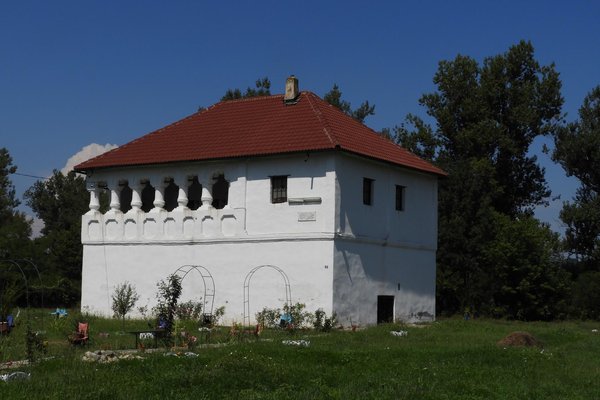Romania
Les coules de Petite Valachie
The “coules” of Little Wallachia are tower-houses. They are three or four levels high and were used by nobility. They were usually built at strategic points to watch the passages.
Site Info
Official Information
- Full Name
- Les « coules » de Petite Valachie (ID: 552)
- Country
- Romania
- Status
-
On tentative list 1991
Site history
History of Les coules de Petite Valachie
- 1991: Added to Tentative List
- Added to tentative list
- Type
- Cultural
- Criteria
Links
- UNESCO
- whc.unesco.org
All Links
UNESCO.org
- whc.unesco.org — whc.unesco.org
Community Information
- Community Category
- Secular structure: Residence
Travel Information
Recent Connections
News
No news.
Community Reviews
Show full reviewsJakob F.
Les « coules » de Petite Valachie by Jakob Frenzel
Les coules de Petite Valachie (On tentative list)
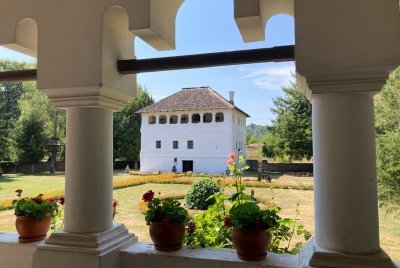
August 2024 - after visiting the Horezu Monastery we made a small detour to still visit the coules. Although the architectural style may be unique, the nomination is rather a joke. You can visit one coules and the Museum for 2€ on the opposite site there was another, which was only viewable from outside. From my pespective nothing noteworthy
Keep reading 0 comments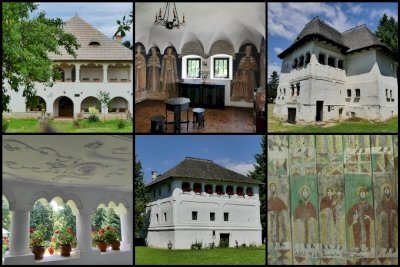
I visited 3 "coules" or culas while driving around Romania. From the little information about this rural tWHS and based on the photos from other reviewers, I was going to skip them since I had quite a fair share of WH locations around Romania already on my "to visit" list. That said, just after visiting Horezu Monastery WHS, John Smaranda texted me to remind me that I should really put in a small effort to take in the nearby locations of Cula Duca and Cula Greceanu. I asked him again whether it was worth the small detour, and he sparked my curiosity be replying "Depends on your expectation level!". Well, I had no expectation at all and I wanted to avoid more near misses, so I drove towards Măldărești, Vâlcea, in the Oltenia region of Romania.
Visiting times are quite restricted and like other place in Romania, even during summer, an old lady with the keys lets you in for a small combined fee or you can call her number displayed near the gate (closed on Mondays). Apart from the etymology of the word "cula", the Ottoman influence is very clear upon viewing Cula Duca from a distance. By visiting the interior of the different floors you get a glimpse of the now tranquil rural setting enjoyed by nobility, but the lofty thick walls and exterior of these tower houses hint quite well at how nobility had to make sure their safety was guaranteed at all times. They were …
Keep reading 0 comments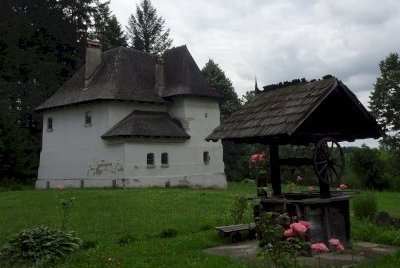
Some reviewers have already noted that the 'coules de petite valachie' TWHS is quite close to the already inscribed Horezu monastry WHS. So is this just a minor sidestep on the way to something more worthwhile, or can it stand on its own ? My initial reaction was indeed "Ah, it is so close, might as well spend a couple of minutes there". However, the site at Maldaresti is actually quite a nice heritage area, with two of the mysterious 'cula', an old church, a little heritage house and some nice green surroundings. The culas itself are interesting, too, being a mixture of a country house and a fortress from a time when the area was seemingly so dangerous that everything needed to be fortified - castles, villages, churches, houses. Still waiting for the 'Fortified outhouses of Transylvania' to show up on the list. I had a good time rummaging through the old houses, and probably spent an hour doing so. The visit also was quite easy, with everything being open and a friendly caretaker going around to collect the small entrance fee. The site is indeed only 5 kilometers away from the entrance of the Horezu monastry, with a pretty direct street connection in between. I had a car, but the distance seemed to be walkable to me. The 'cula' concept is interesting and unique enough to make it worthwhile for the list, so all in all, a thumbs up from me for the site. It would have been …
Keep reading 0 comments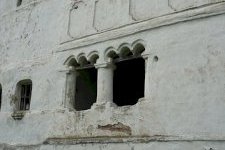
In the heart of Romania, The Oltenia-area is a land dominated by wide fields and gentle hills, represented the granary and, on the other hand, the good wine or the fruit distillate.The small local governors - the boyars, have accumulated over time wealth, through the exploitation of poor-people and the fruitful land. But as they all have a price, insurers for the protection of goods had to be taken.Hard to believe, but on the territory where the Wallachian population lived mainly in specific medieval dwellings dug in the ground, it can be noticed here constructions that anticipated the appearance of blocks with 3-4 levels.The word "cula", which draws its origin from the Turkish tKula (tower), designates such creations, specific here only to the Oltenian area.And why the Ottoman influence? Well, it was from then on that the boyars of the place appeared to protect their household and their lives, by striving to erect buildings with 2, 3 or even 4 levels - small fortresses.Their location was strategically designed, it would have been easy for them to retreat in case of distress, but to observe their movement in the distance, and from all sides fire could be carried through numerous firing holes.And it was not just the fear of the Turkish-attacs from the top of the Danube, but also to the haiduks of the place, who could easily access from the surrounding area.Despite the lack of interest of the central or local authorities, we have found near them good hearted people …
Keep reading 0 comments
